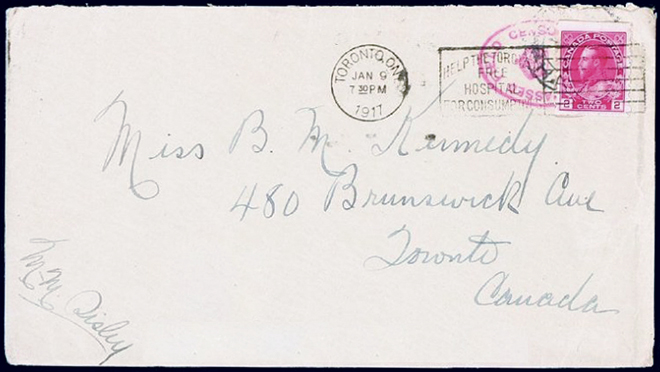On today’s date in 1914, as Britain entered the First World War, so, too, did Canada, whose foreign policy was then controlled by the British under the Constitution Act, 1867.
The next day, the government of the nascent North American dominion announced it would raise and fund a Canadian Expeditionary Force (CEF) to serve in Europe alongside Allied forces. For the Canadian military, this represented a problem because its tiny permanent army was not up to the task. Rather than mobilize the militia, officials decided to raise a separate force using numbered battalions comprised of an active militia plus civilian and veteran volunteers.
The Canadian public responded quickly.
MILITARY POST OFFICE
Sam Hughes, then minister of militia and defence reporting to prime minister Robert Borden, raised a force and built a new training camp, Camp Valcartier in Québec, from scratch.
By the end of August, a military post office was established at the camp and manned by members of the Canadian Postal Corps, an entity created only a few years earlier. Up until then, the corps was largely responsible for handling mail at the militia summer training camps.
By the first week of October, a fleet of ships loaded with more than 30,000 Canadian soldiers left for England. Those on board included military mailmen.
By this time, cancels were being applied with both rubber and steel stamps. The round cancels, with a crown above and maple leaf emblem, were marked “Canadian Overseas Expeditionary Force, Field Post Office (FPO).” Some had a date and post office number.
As the number of soldiers grew, field post offices were set up in Britain. Canadian mail often used some British infrastructure and even sometimes British military post offices. Soldiers were entitled to free mail, but for most of the war, stamps were applied to the letters after they arrived in Canada.
Soon, the number of designs became bewildering. Canadian FPOs still used circles, often with military abbreviations, and an “X” designation to mark Canadian mail. Other letters were used to designate specific post offices, various levels of headquarters or military infrastructure. Apparently, the “X” mark was confused with the British X Corps, and a “P” mark was substituted in 1917.
Other members of the postal corps remained in Canada. For the most part, they continued working in the same manner as they had during summer training—even using the same found cancels established in pre-war years.
Early on, the Canadian government started rounding up foreign nationals – often immigrants who had been born in lands that were part of the Austro-Hungarian Empire – and placing them in internment camps. In 1915, captured German soldiers and sailors were sent to Canada, where prisoner-of-war camps were built for them.
The operation, commanded by Major-General William Otter, a hero of the Boer War and Northwest Rebellion, required more postal service depots, and all letters were subject to censorship.
RUSSIAN THEATRE
One little-known theatre of conflict was Russia.
In 1918, more than 4,000 Canadian troops were shipped to Siberia as part of an effort by the allies to prop up the eastern front in the middle of a Russian Revolution.
Once again these troops travelled with their own military post office.
The force was equipped with a cancel reading “Field Post Office Canadian Siberian Expeditionary Force.”

